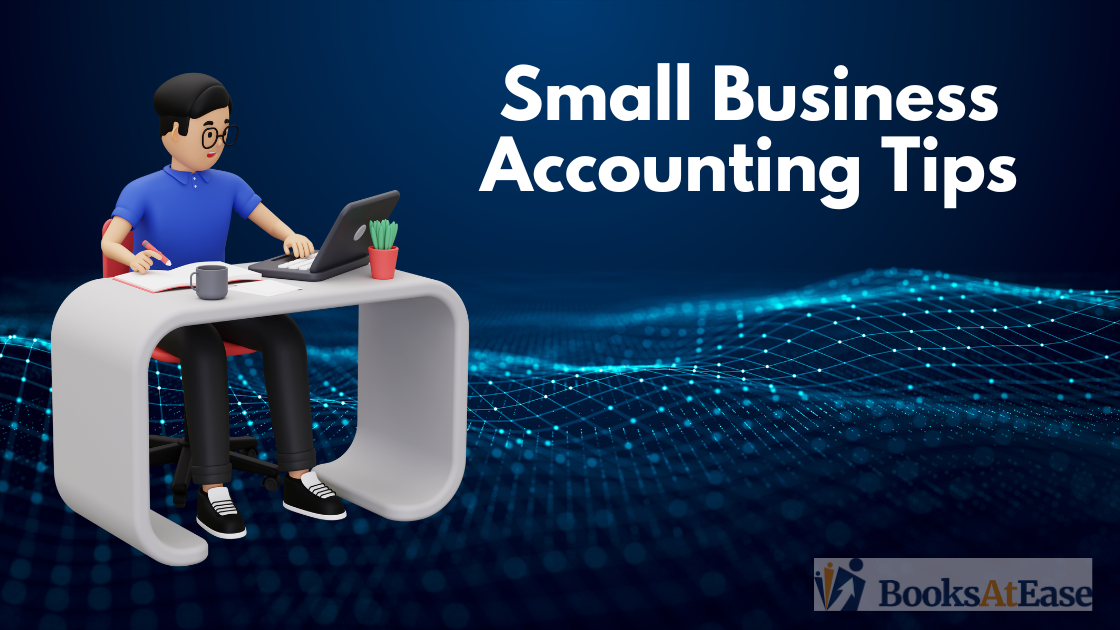Today’s topic is all about bookkeeping for Etsy sellers, which can be a challenging task for creatives who want to focus on their craft rather than the numbers. However, keeping accurate and up-to-date financial records is crucial for the success of any business, and Etsy is no exception.

In this guide, I will walk you through the basics of bookkeeping for Etsy sellers, including the best practices and essential tools you need to manage your finances efficiently. Whether you’re a new Etsy seller or a seasoned one, this guide will help you understand the importance of bookkeeping and accounting for your creative business.
Before moving on to the article, if you are at the very beginning of this entrepreneurship journey, read how to open an Etsy shop.
Okay, now we’re ready. Let’s dive in!
Why Bookkeeping is Important for Etsy Sellers
As an Etsy seller, you are an entrepreneur, an artist, and a business owner all at once. While creating beautiful handmade products or offering unique digital downloads is your passion, you also need to take care of the less glamorous but equally important part of your business: bookkeeping.
Bookkeeping refers to the process of recording, classifying, and organizing financial transactions of your business. It includes tracking income, expenses, and profits and producing financial statements such as a balance sheet and income statement. Keeping your financial records in order is crucial for the success and growth of your Etsy shop.
In this section, we will discuss why bookkeeping is essential for Etsy sellers and how it can benefit your business. So let’s dive in!

Basics of Bookkeeping and Accounting for Etsy Sellers
When you’re running a small business, keeping track of your finances is essential. This is especially true for Etsy sellers, who often juggle multiple sales and expenses on the platform. Bookkeeping is the process of tracking and organizing your financial transactions, while accounting is the practice of using that information to make decisions about your business.
In this article, we’re providing you with an Etsy Profit Calculator and Etsy Product Margin in one spreadsheet.
Also, learn more about P&L statements and download your free spreadsheet.
As an Etsy seller, you’ll need to have a basic understanding of both bookkeeping and accounting to manage your business effectively.
Setting Up Your Etsy Bookkeeping System
The first step in managing your finances as an Etsy seller is setting up a bookkeeping system. This involves organizing your sales and expenses, tracking your profits and losses, and keeping records for tax purposes.
Learn more from our complete guide for online sellers.
There are several ways to set up a bookkeeping system for your Etsy shop, but one of the most popular is using accounting software like QuickBooks.
Using QuickBooks for Etsy Bookkeeping
QuickBooks is a powerful accounting software that can help Etsy sellers manage their finances more efficiently. It allows you to track your sales and expenses, generate invoices and receipts, and monitor your profits and losses.
Plus, it’s easy to use and integrates seamlessly with Etsy. QuickBooks also offers a specialized version for self-employed individuals, called QuickBooks Self-Employed, which is tailored specifically for Etsy sellers and other small business owners.
Other Etsy Accounting Software Options
While QuickBooks is a popular choice for Etsy sellers, there are other accounting software options to consider as well. Some alternatives to QuickBooks include:
- Xero: This cloud-based accounting software offers similar features to QuickBooks, including invoicing, bank reconciliation, and expense tracking.
- Wave: Wave is a free accounting software that offers basic bookkeeping and accounting features, including invoicing and expense tracking.
- FreshBooks: This accounting software is designed for freelancers and small business owners, with features like time tracking, invoicing, and project management.

Basic Bookkeeping Tasks for Etsy Sellers
Once you’ve set up your bookkeeping system, there are several basic tasks you’ll need to perform regularly to keep your finances in order. These include:
- Recording your sales and expenses: This involves tracking all the money coming in and going out of your Etsy shop.
- Reconciling your accounts: This means making sure that your records match up with your bank statements and other financial documents.
- Creating financial reports: Financial reports, such as profit and loss statements and balance sheets, can help you understand the financial health of your Etsy shop and make informed decisions about your business.
By performing these basic bookkeeping tasks regularly, you’ll have a better understanding of your Etsy shop’s finances and be better prepared for tax season.
In the next section, we’ll dive deeper into some of the specific bookkeeping and accounting tasks that Etsy sellers need to be aware of.
We dedicated an article for the most common bookkeeping mistakes. Before continuing make sure that you have read it.

Importance of Separating Business and Personal Finances
As an Etsy seller, it’s crucial to separate your business and personal finances. This separation will help you keep track of your business expenses, earnings, and taxes. It also makes it easier for you to manage your finances and budget your expenses.
Separating your finances will also help you avoid confusion during tax season. By having a separate bank account and credit card for your business, you can easily identify your business expenses and earnings. This way, you can claim all your business expenses and reduce your taxable income.
Moreover, separating your finances gives you a clear picture of your business’s profitability. It allows you to evaluate your business’s performance and identify areas where you need to improve.
To separate your finances, you can open a separate bank account for your business. You can also get a credit card specifically for your business expenses. This way, you can easily track your business’s expenses and earnings.
Setting Up Your Etsy Shop for Bookkeeping
Congratulations on opening your Etsy shop! Now that you have your shop up and running, it’s time to set it up for proper bookkeeping. Proper bookkeeping practices are essential for managing your finances and keeping your business running smoothly. Here are the steps to set up your Etsy shop for bookkeeping:
Choose Accounting Software
The first step is to choose an accounting software that works for your Etsy business. Some popular options for Etsy sellers include QuickBooks Self-Employed, Wave, and Xero. Each of these options offers different features and pricing plans, so it’s important to do your research and choose the one that best suits your needs.
Connect Your Etsy Shop to Your Accounting Software
Once you have chosen your accounting software, it’s time to connect your Etsy shop to your software. This step will allow you to automatically import your Etsy sales and fees, making bookkeeping much easier. To connect your Etsy shop to your accounting software, you will need to follow the software’s instructions for connecting to an online marketplace.
Set Up Your Chart of Accounts
A chart of accounts is a list of all the accounts you use to record transactions in your business. It’s important to set up your chart of accounts correctly so that you can track your income and expenses accurately. Your accounting software should provide a default chart of accounts, but you may need to customize it to fit your specific business needs.
Record Your Sales
Recording your sales in your accounting software is an essential step in proper bookkeeping. When you make a sale on Etsy, you should record the sale in your accounting software. This will allow you to track your income and expenses accurately, which will make tax time much easier.
Record Your Expenses
In addition to recording your sales, you should also record your expenses in your accounting software. This includes expenses such as supplies, shipping costs, and Etsy fees. By recording your expenses, you can track your business’s profitability and identify areas where you can cut costs.
Reconcile Your Accounts
Reconciling your accounts is the process of ensuring that your accounting records match your bank and credit card statements. This is an important step in catching errors and preventing fraud. Your accounting software should have a built-in feature for reconciling your accounts.
By following these steps, you can set up your Etsy shop for proper bookkeeping and ensure that your business runs smoothly. In the next section, we will discuss some bookkeeping best practices for Etsy sellers.

Tips for Effective Etsy Bookkeeping
- Implement a system for tracking income and expenses
- Use bookkeeping software like QuickBooks Self-Employed or other Etsy accounting software
- Categorize expenses correctly to ensure accurate financial reporting
- Set up automatic bank and credit card feeds for seamless tracking
- Keep detailed records of inventory and sales
- Use a spreadsheet or inventory management software to keep track of product details
- Keep records of sales and fees associated with each transaction
- Monitor cash flow and stay on top of taxes
- Keep track of when payments are due and schedule reminders for yourself
- Set aside money for taxes as you earn it to avoid surprises at tax time
- Consider hiring a professional bookkeeper
- If you’re not comfortable with bookkeeping or don’t have the time, consider hiring a professional to handle it for you
- A bookkeeper can help you stay organized and ensure accurate financial reporting
Remember, effective bookkeeping is critical to the success of your Etsy shop. By implementing these tips and staying on top of your finances, you’ll be better equipped to make informed business decisions and achieve your goals.
Conclusion
In conclusion, bookkeeping is a crucial aspect of running a successful Etsy shop. As a creative entrepreneur, it’s important to understand your finances, and with the tips outlined in this article, you can ensure that your bookkeeping practices are effective and efficient.

Remember, the key to successful bookkeeping is staying organized, using the right tools, and keeping accurate records. By doing so, you can make informed business decisions, stay on top of your taxes, and ultimately, grow your Etsy business.
If you need further assistance with your bookkeeping, consider hiring a professional or using a bookkeeping software like QuickBooks Self-Employed to streamline your accounting processes.
With the right approach, bookkeeping doesn’t have to be a daunting task, and you can focus on doing what you love – creating and selling your unique handmade items on Etsy.
Before deciding, make sure that you are well-informed. Also, read our article about bookkeeping services vs DIY bookkeeping
Thank you for taking the time to read this guide. We hope it has been helpful in your journey as an Etsy seller. Happy selling and happy bookkeeping!



